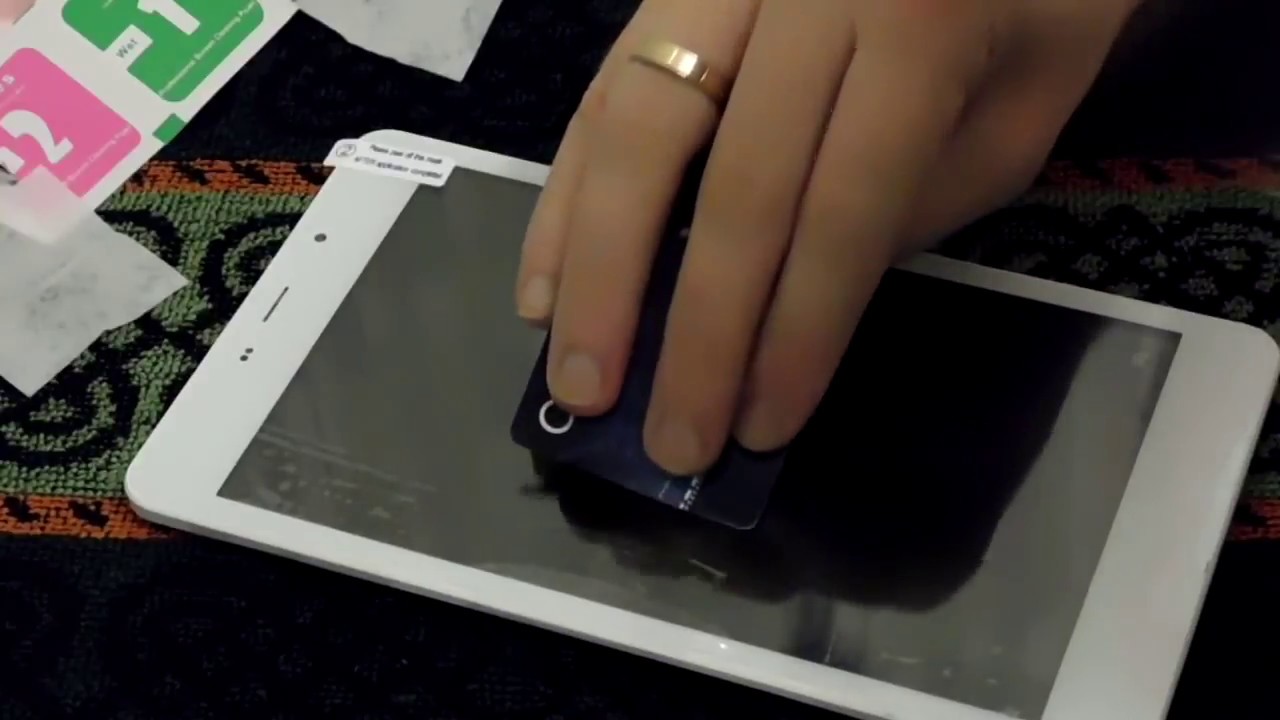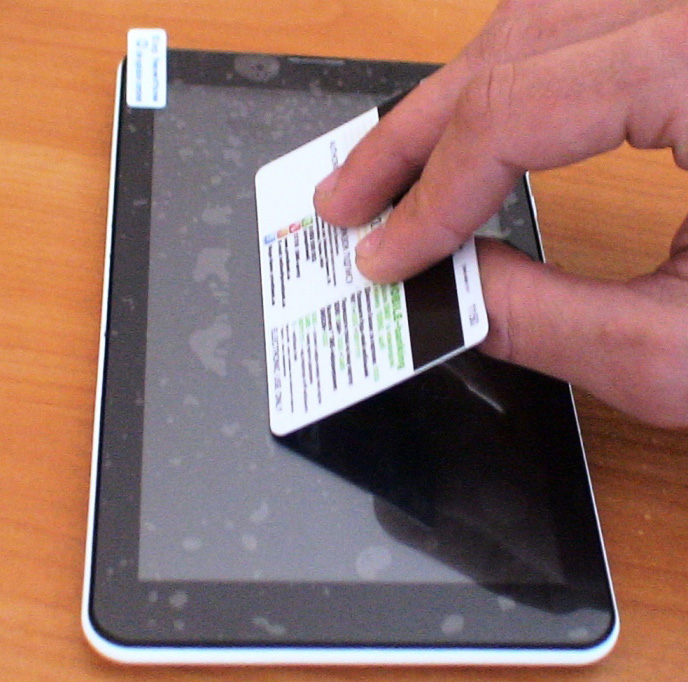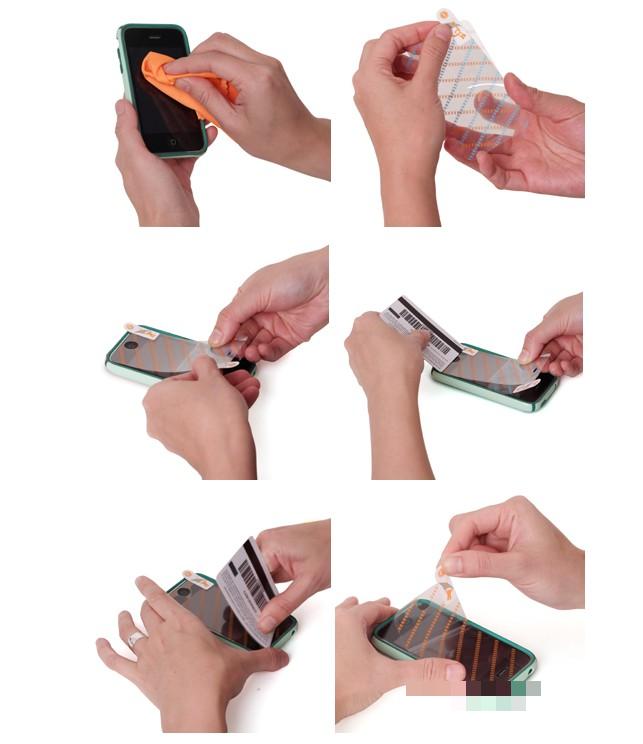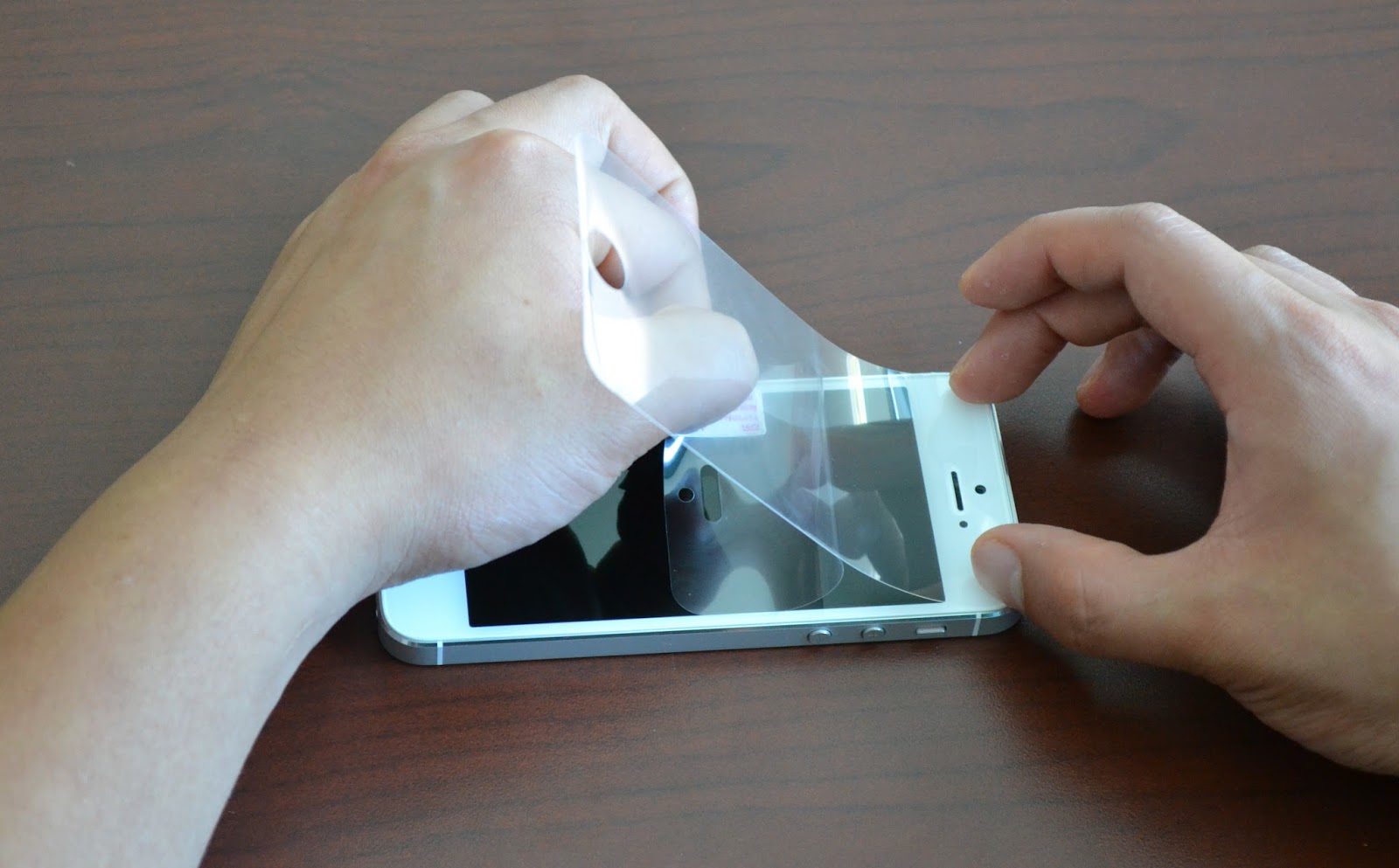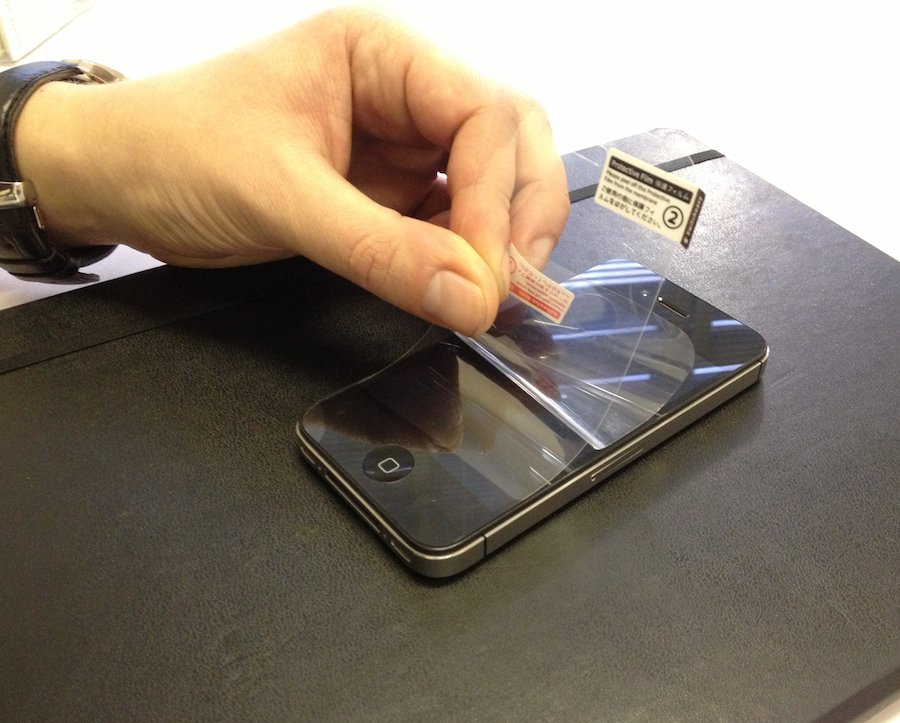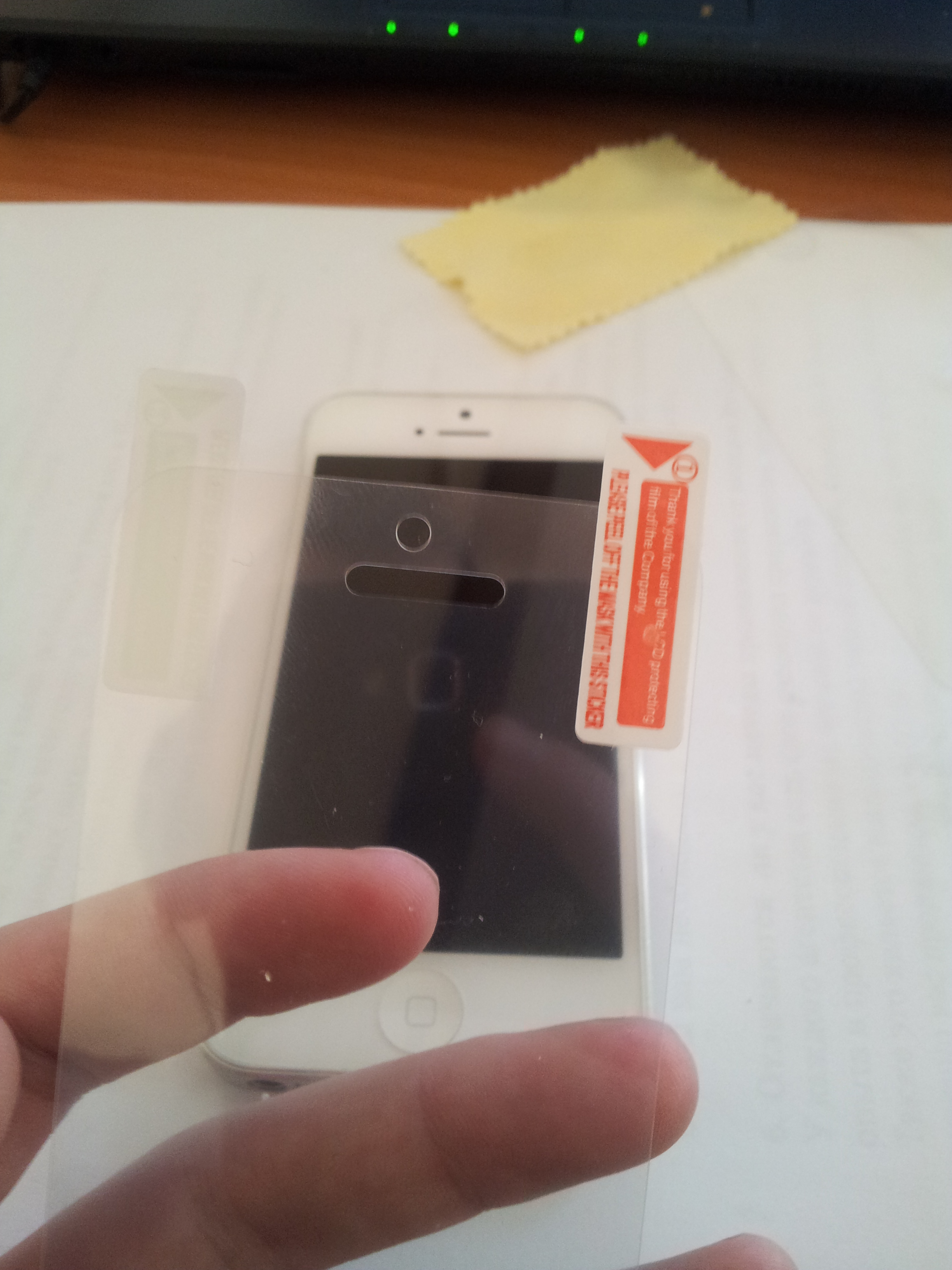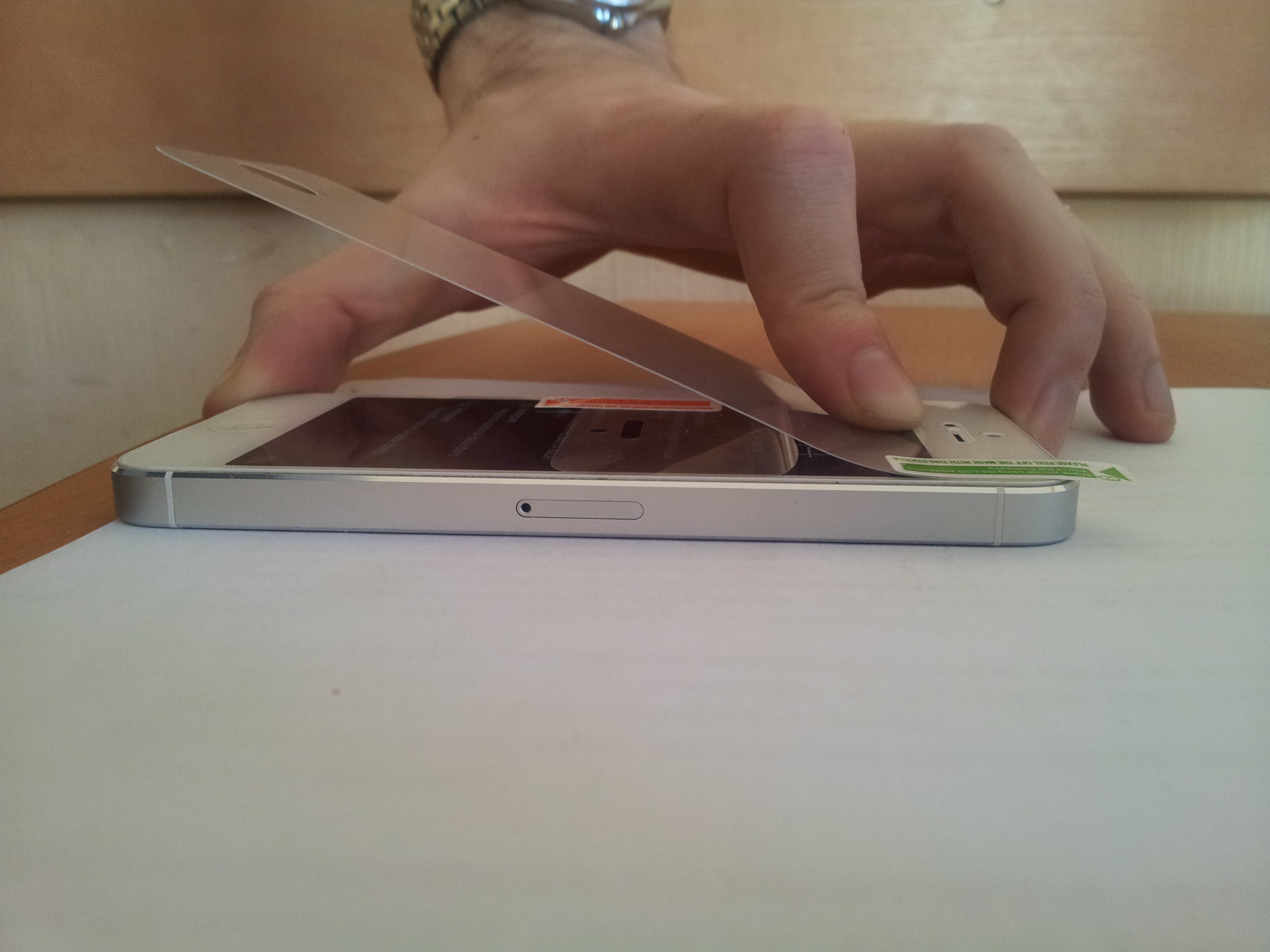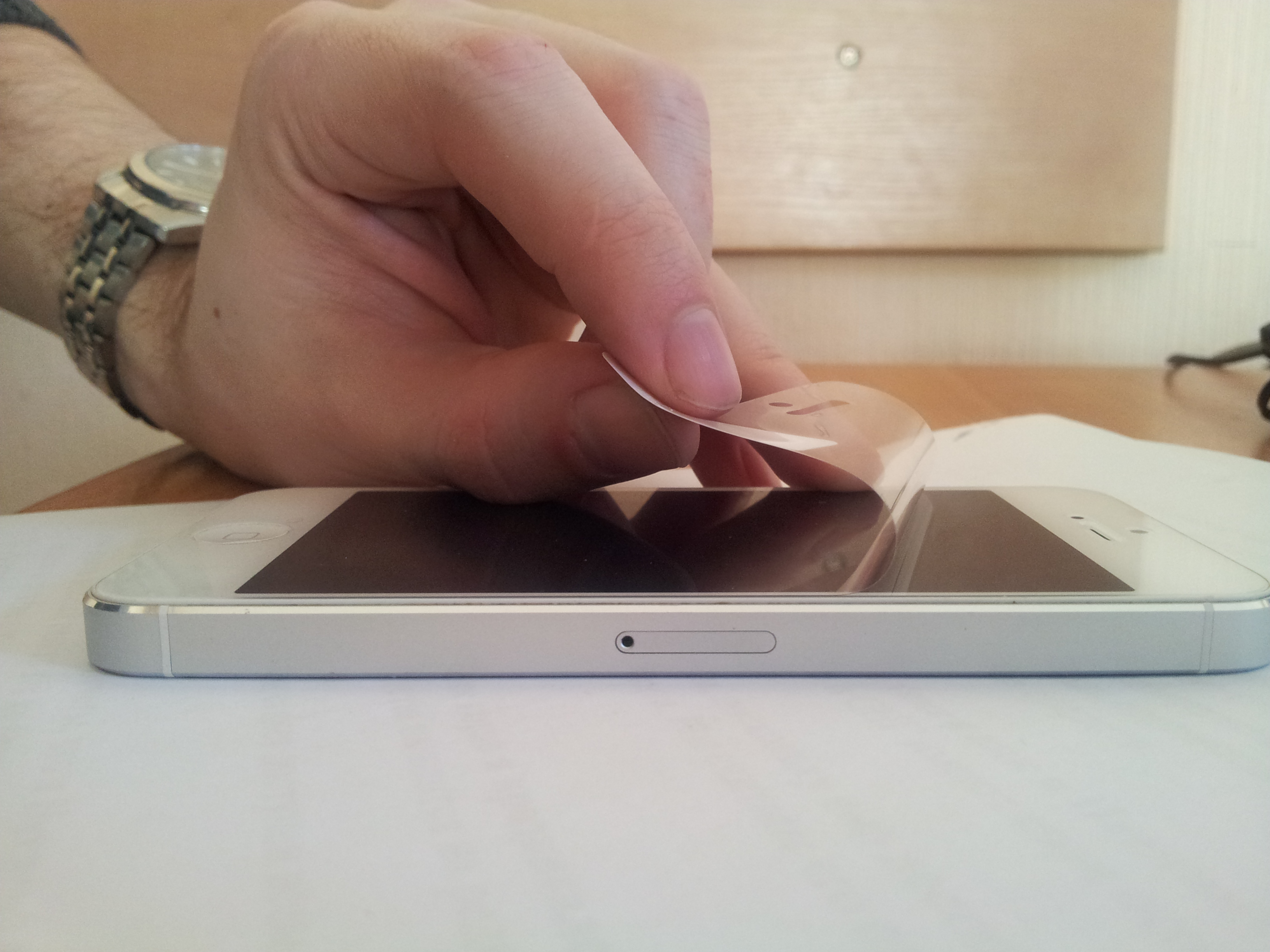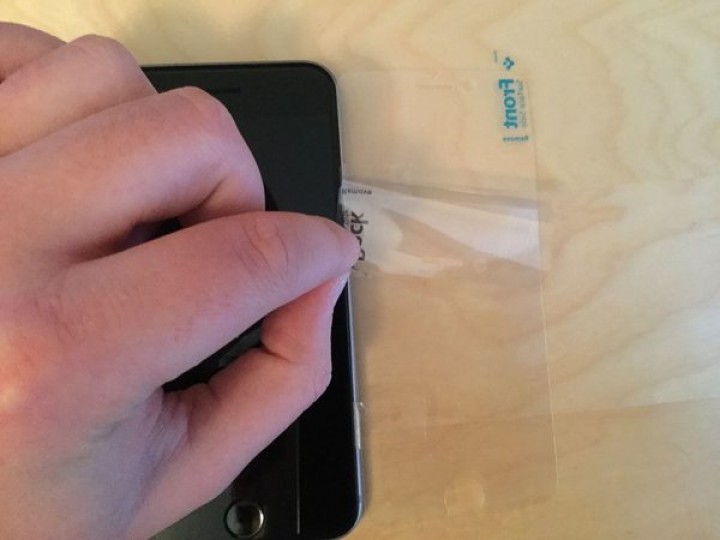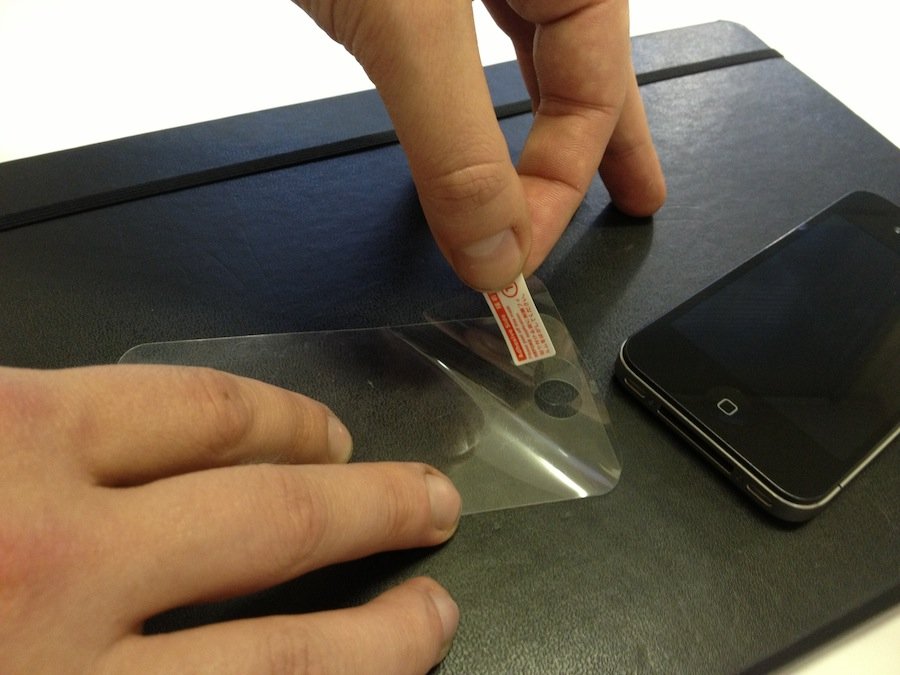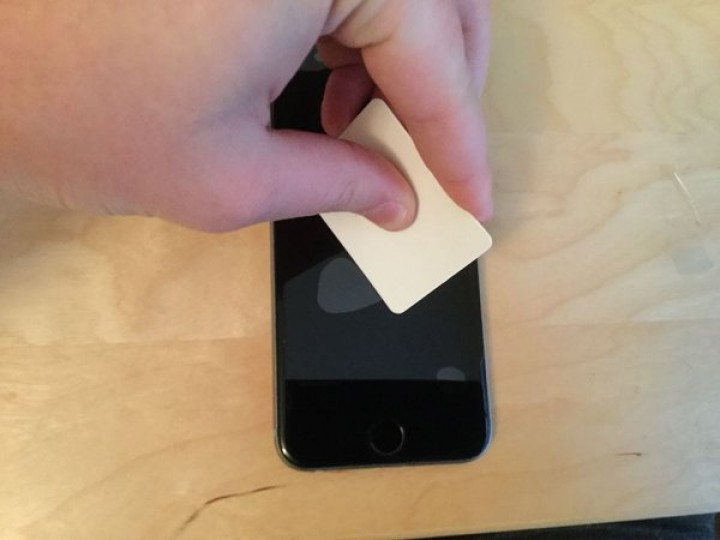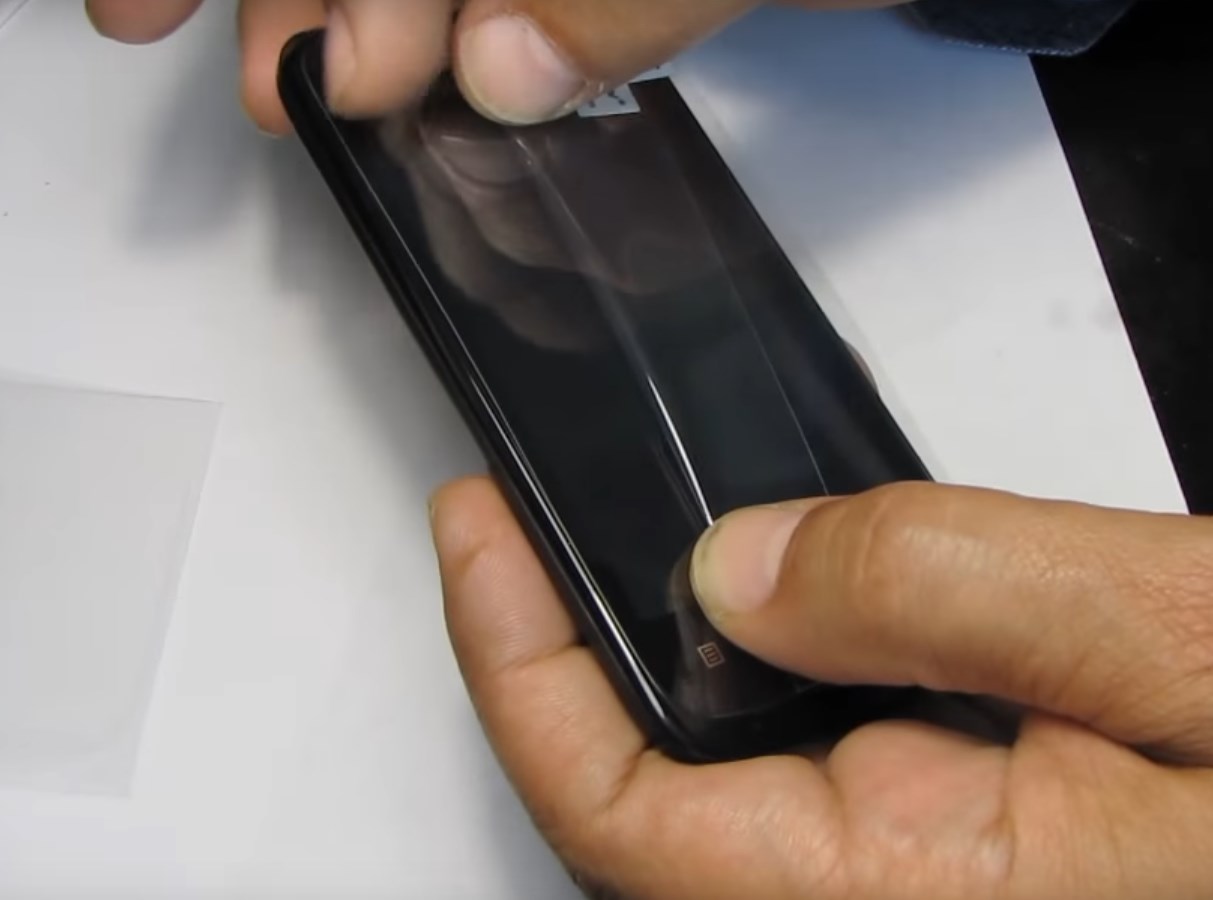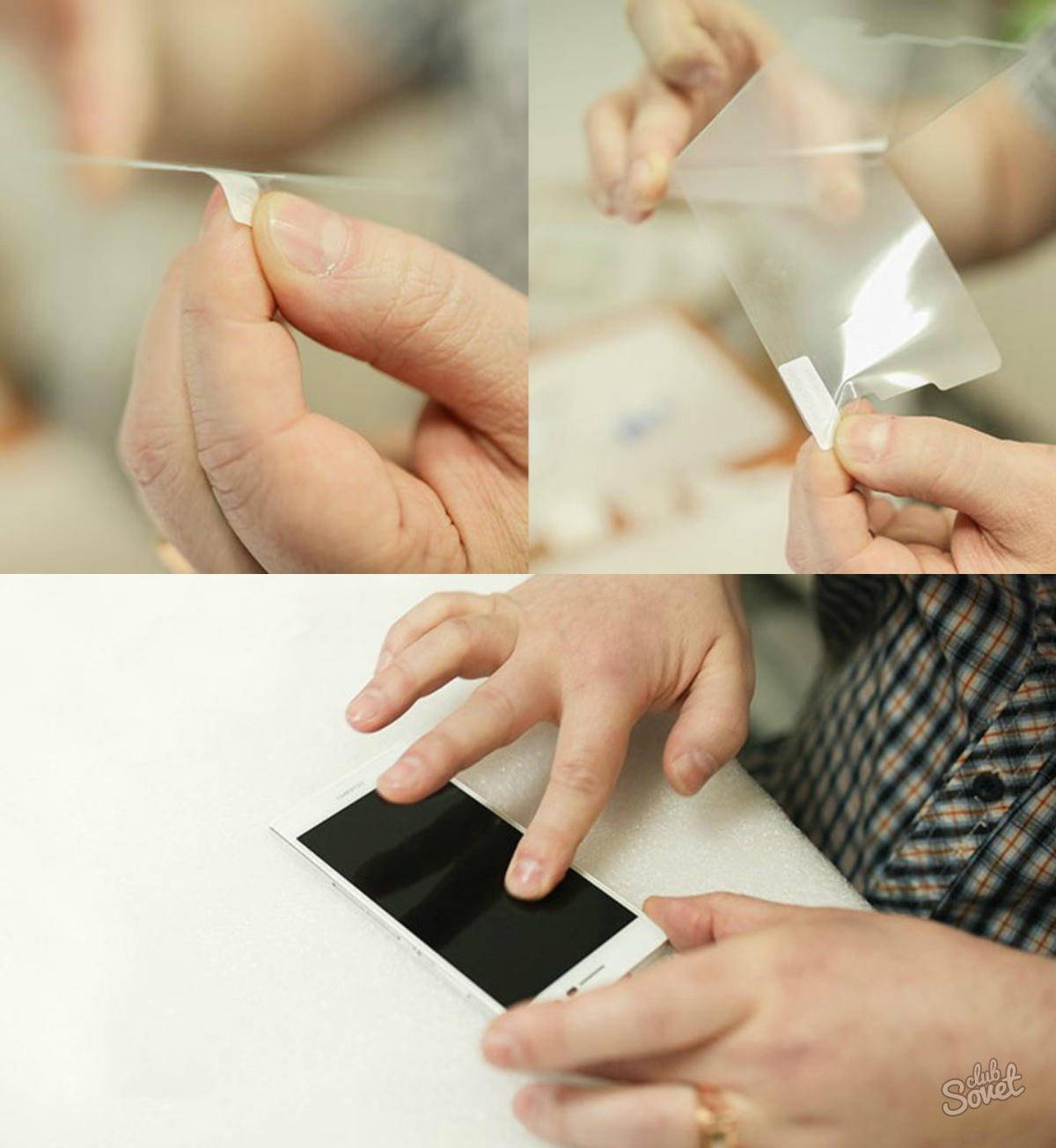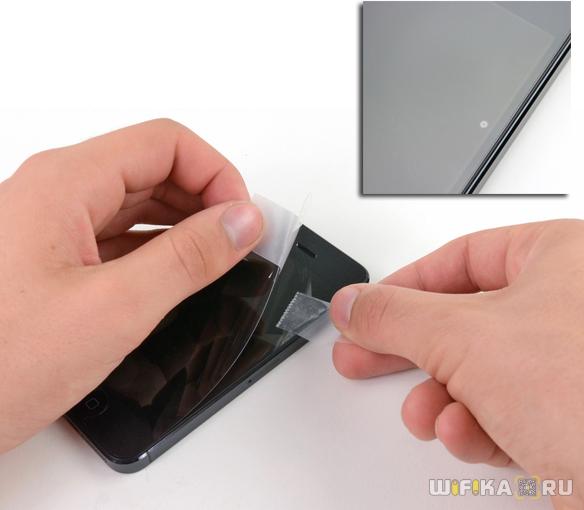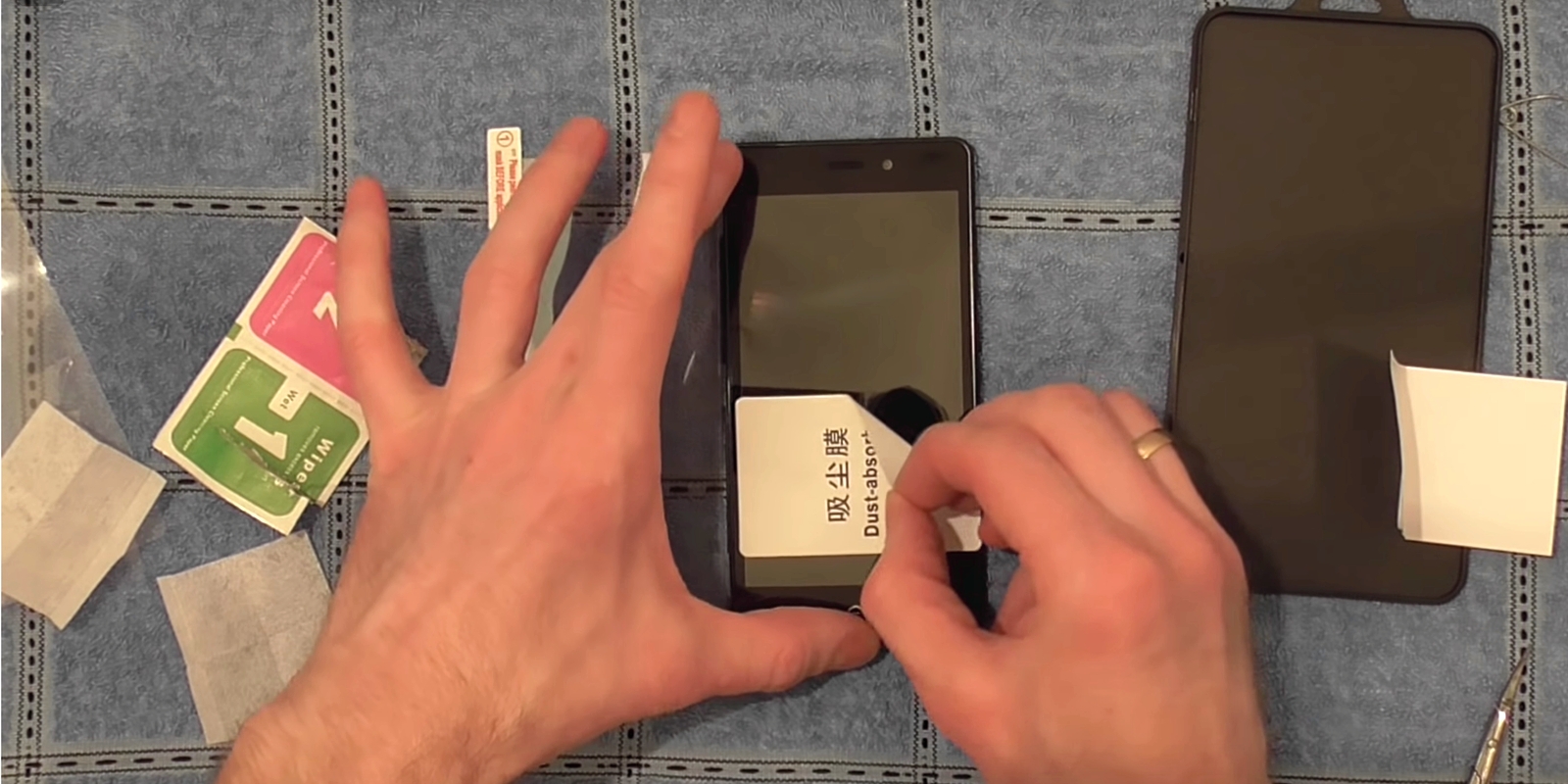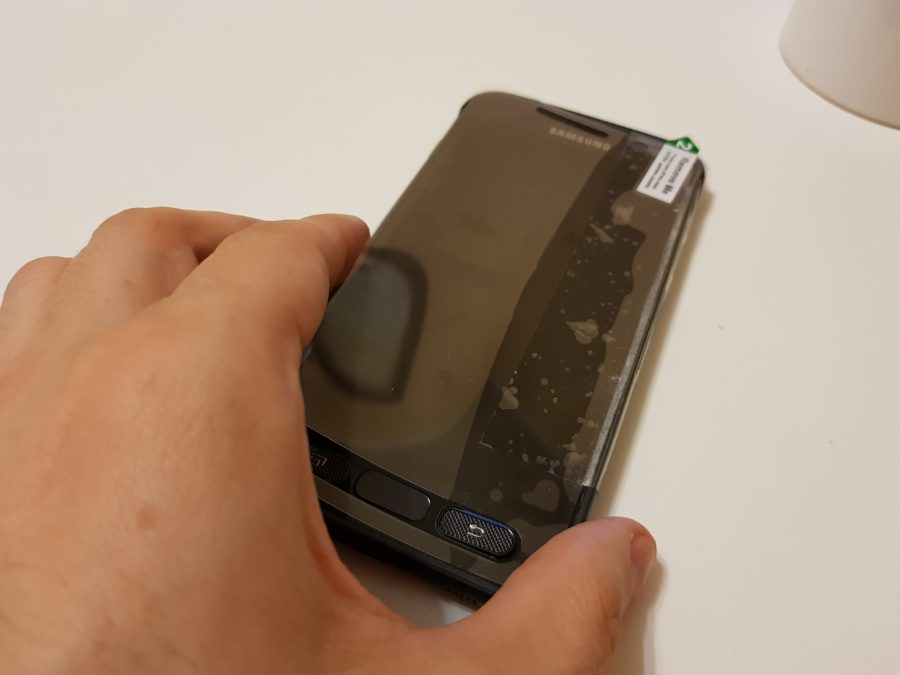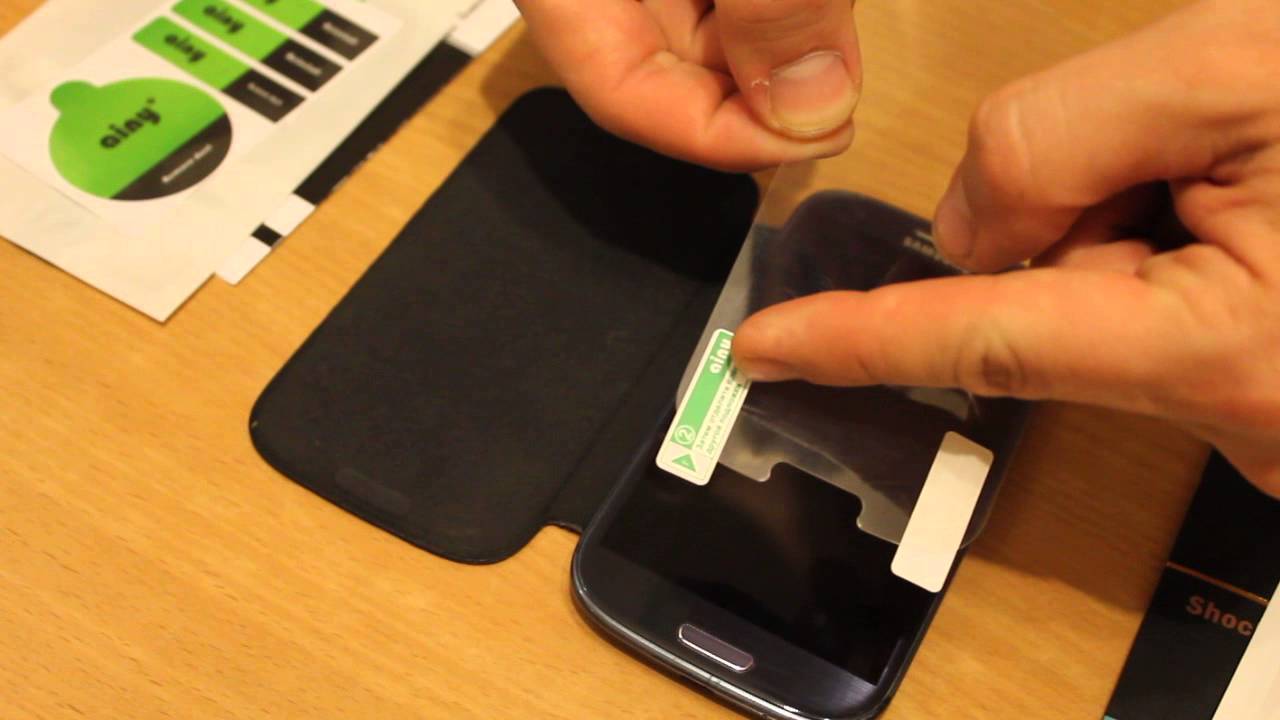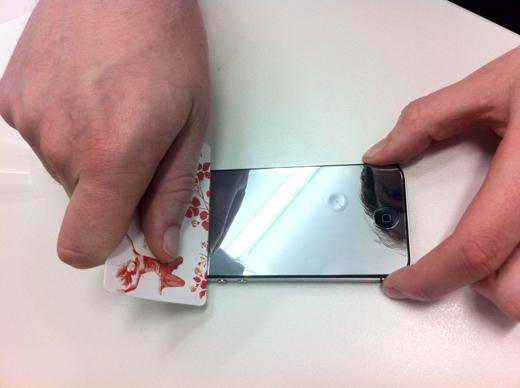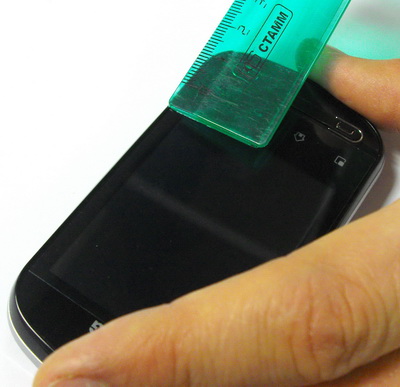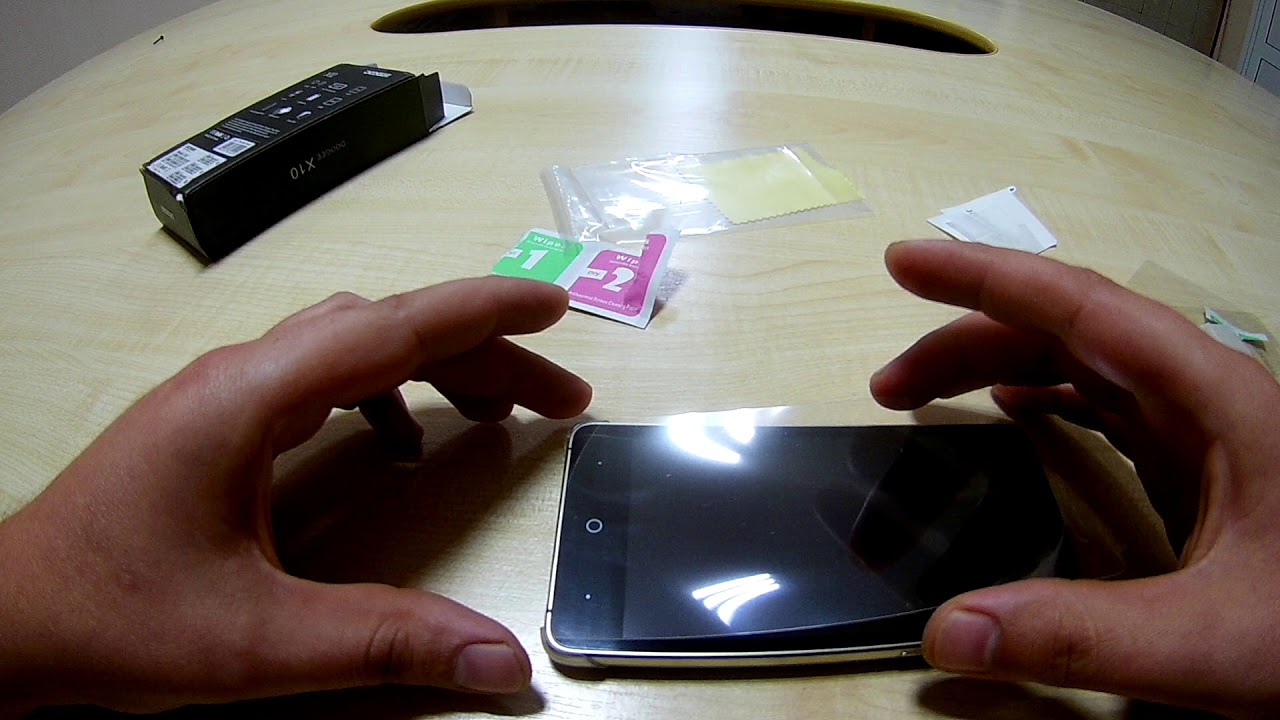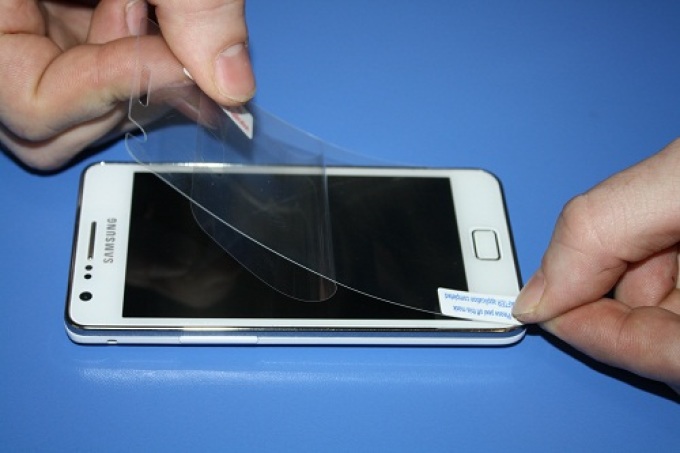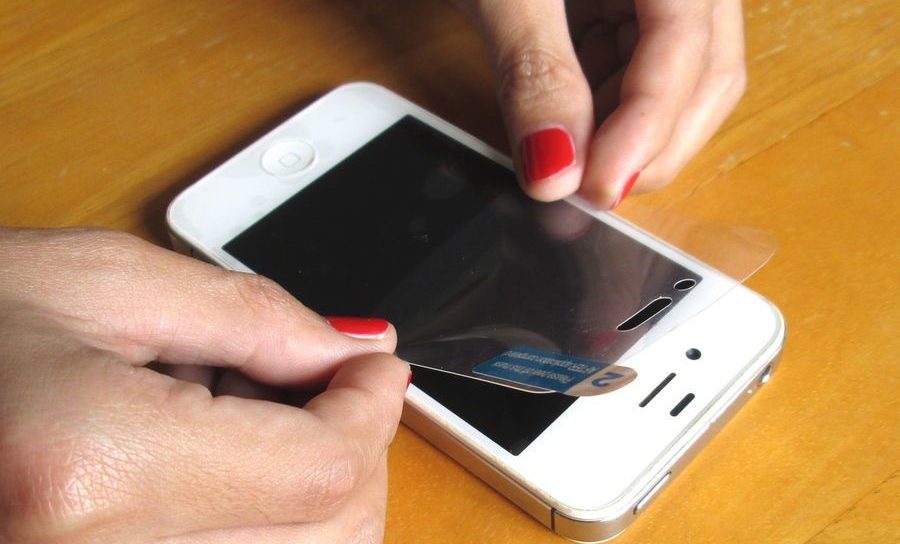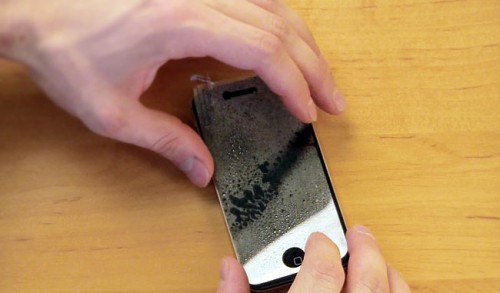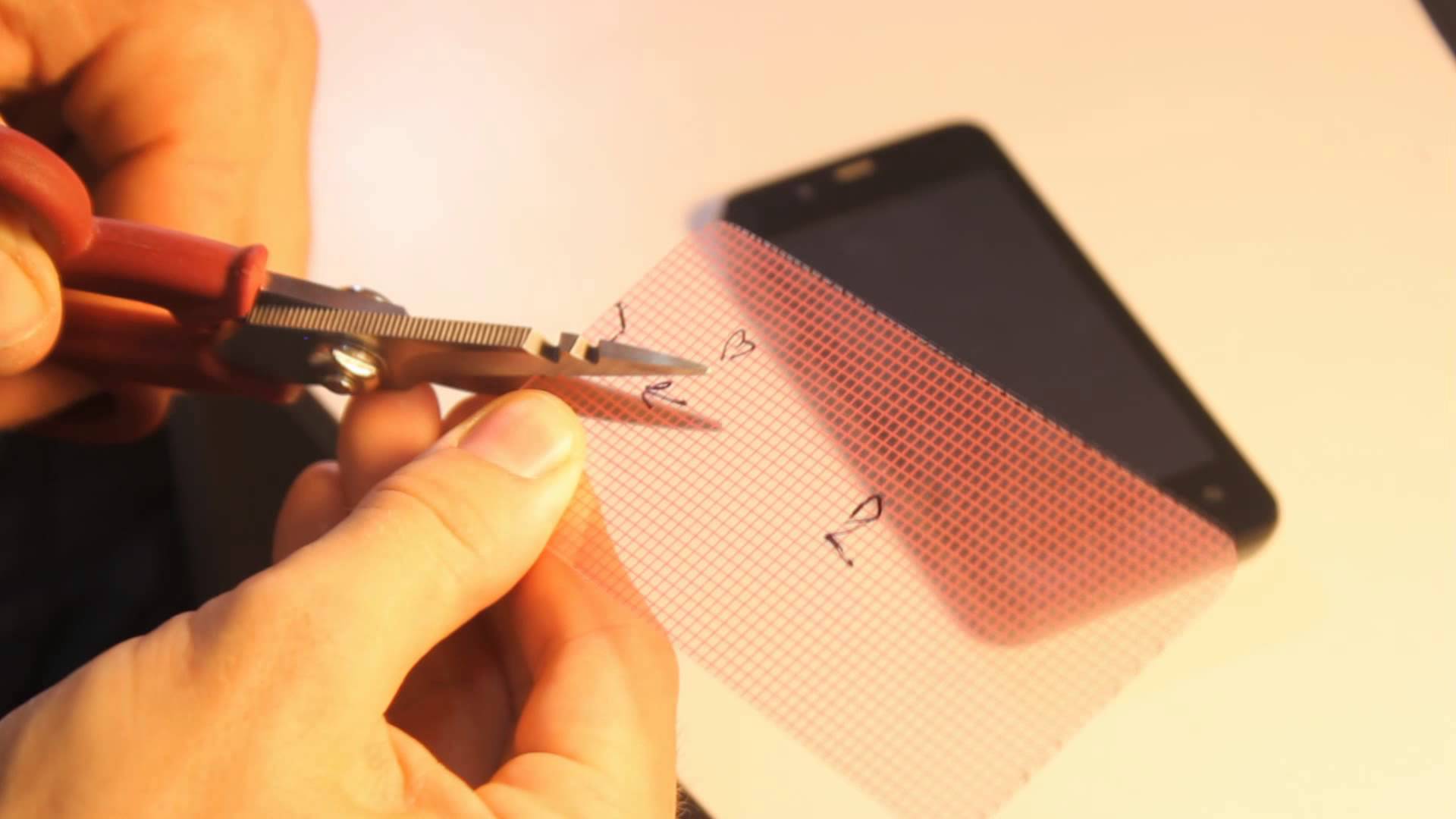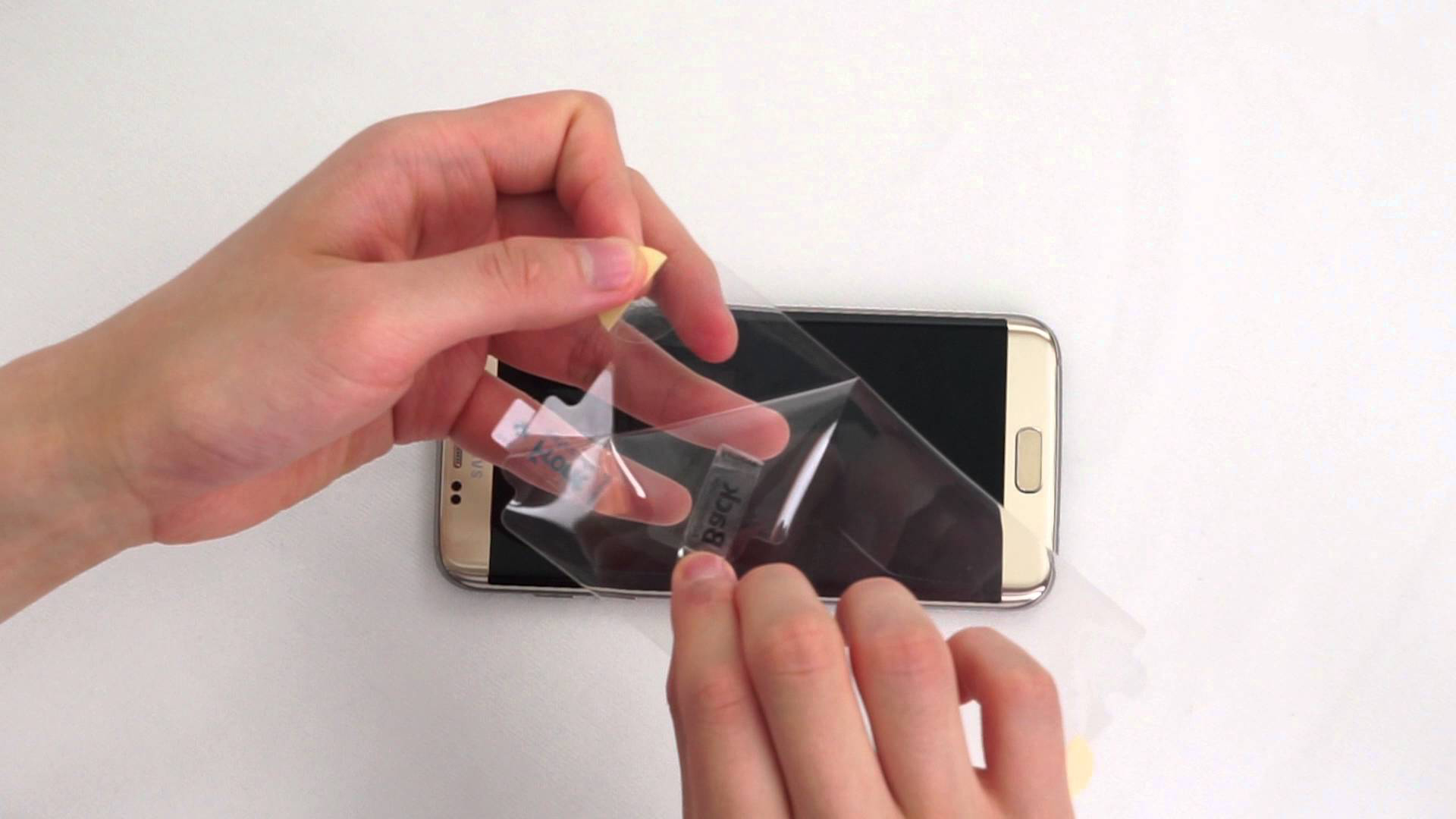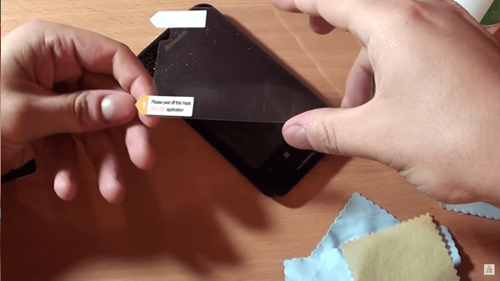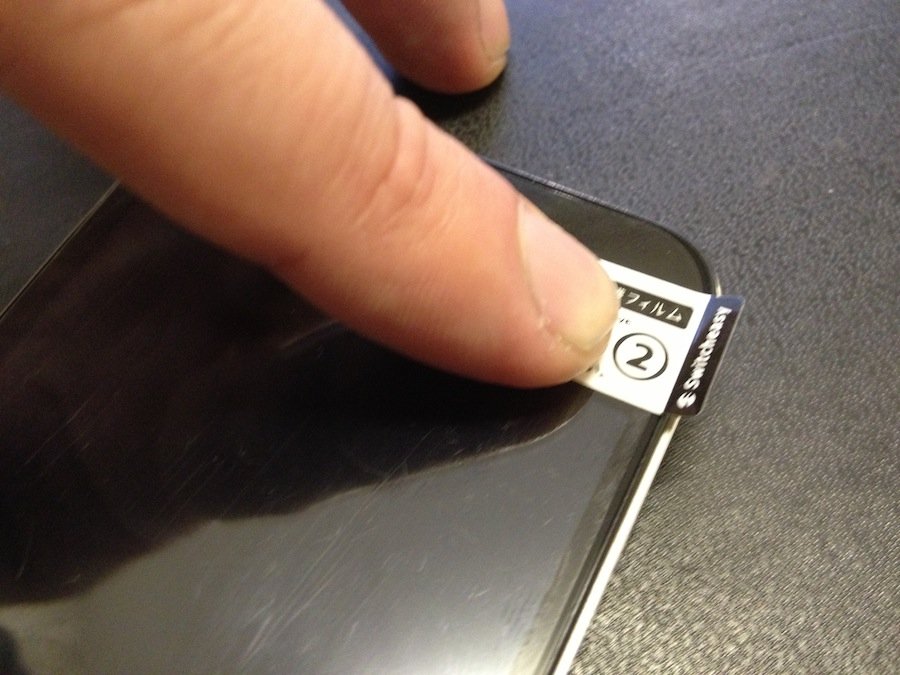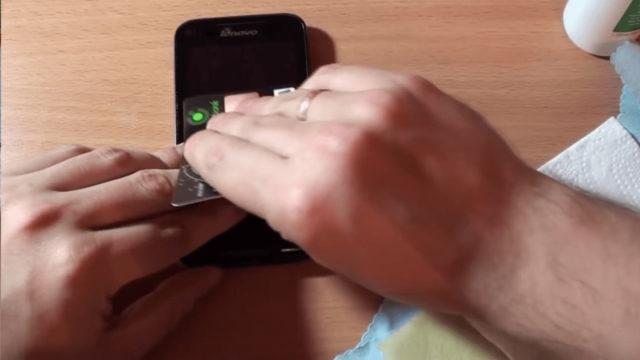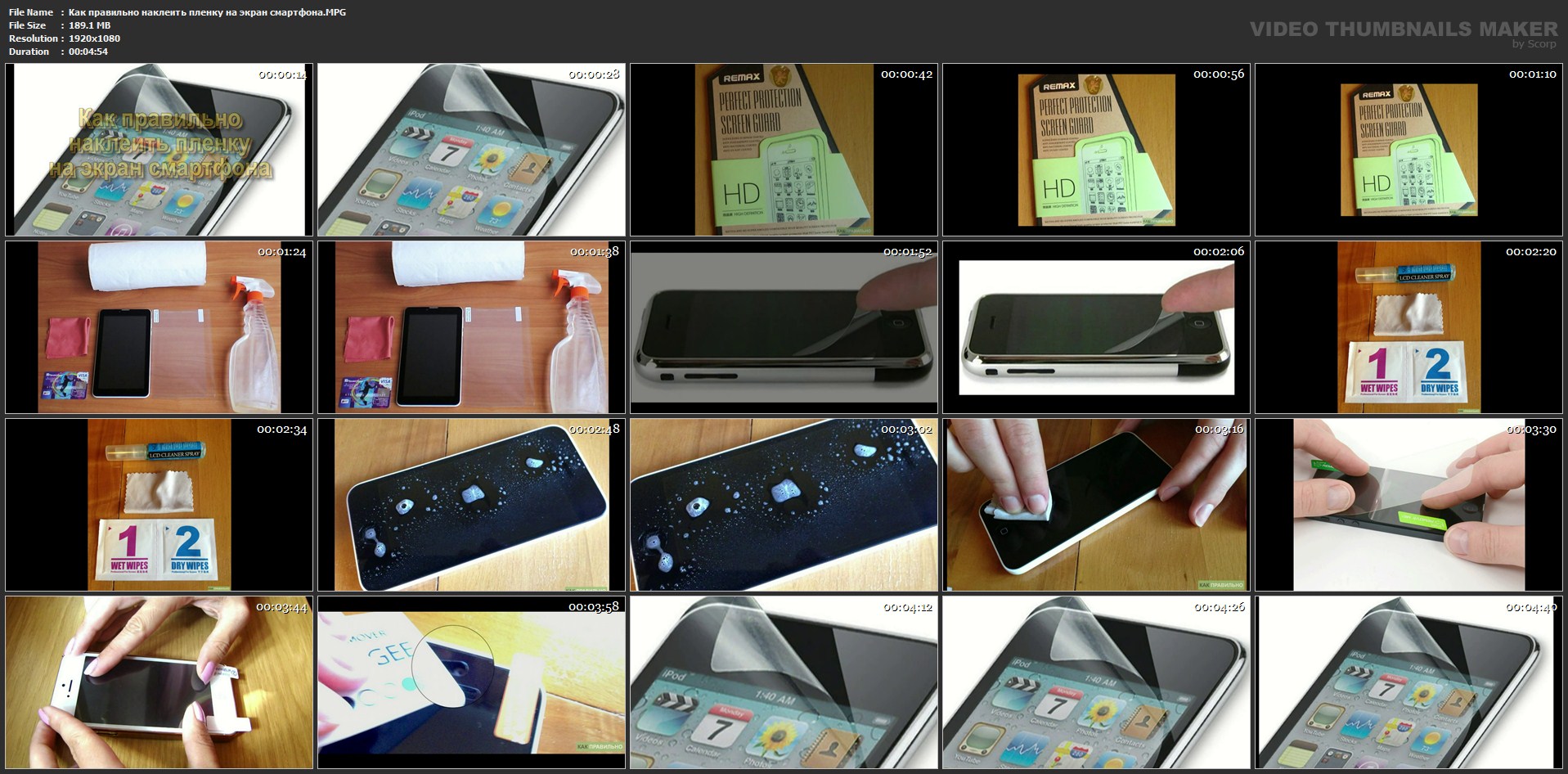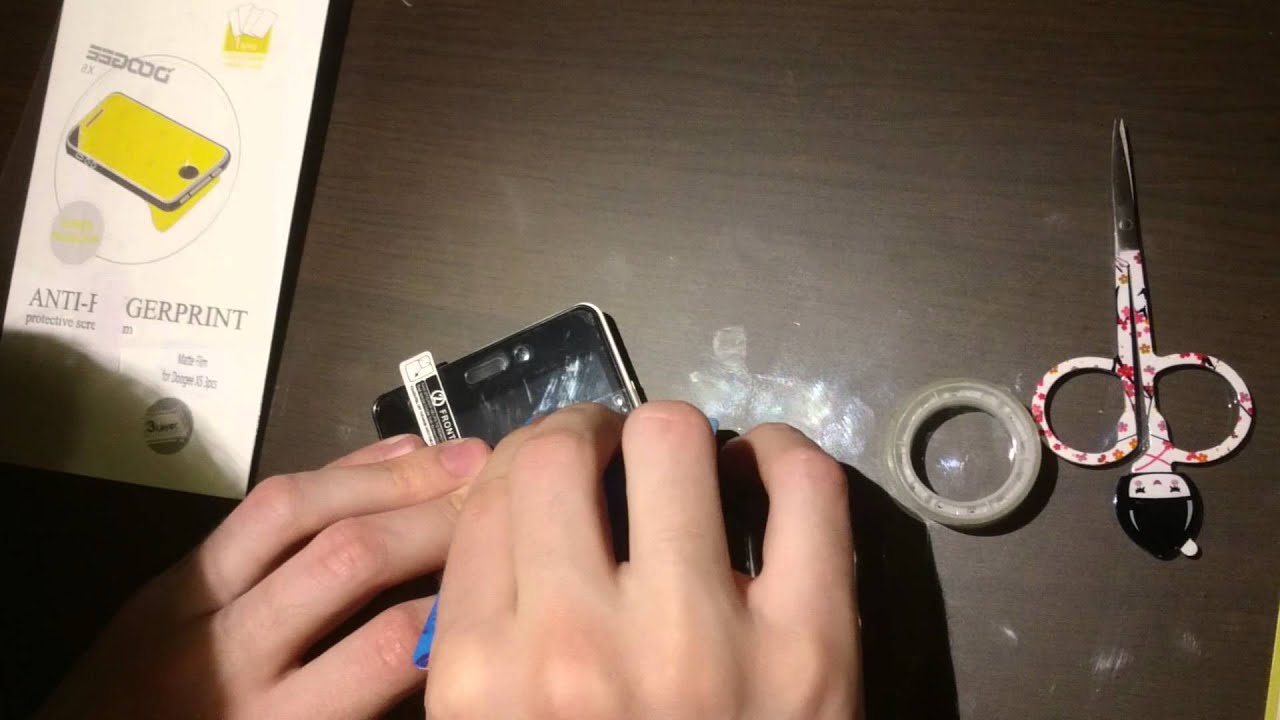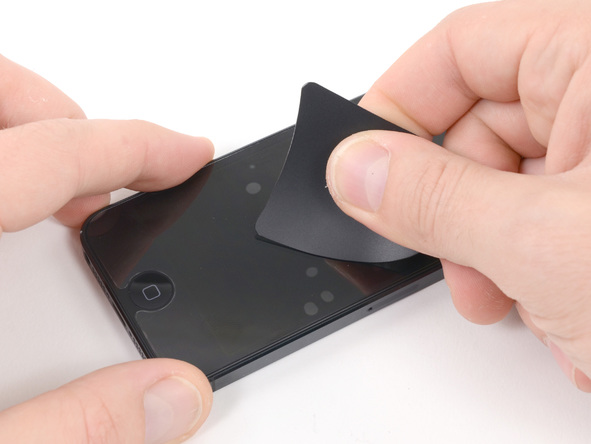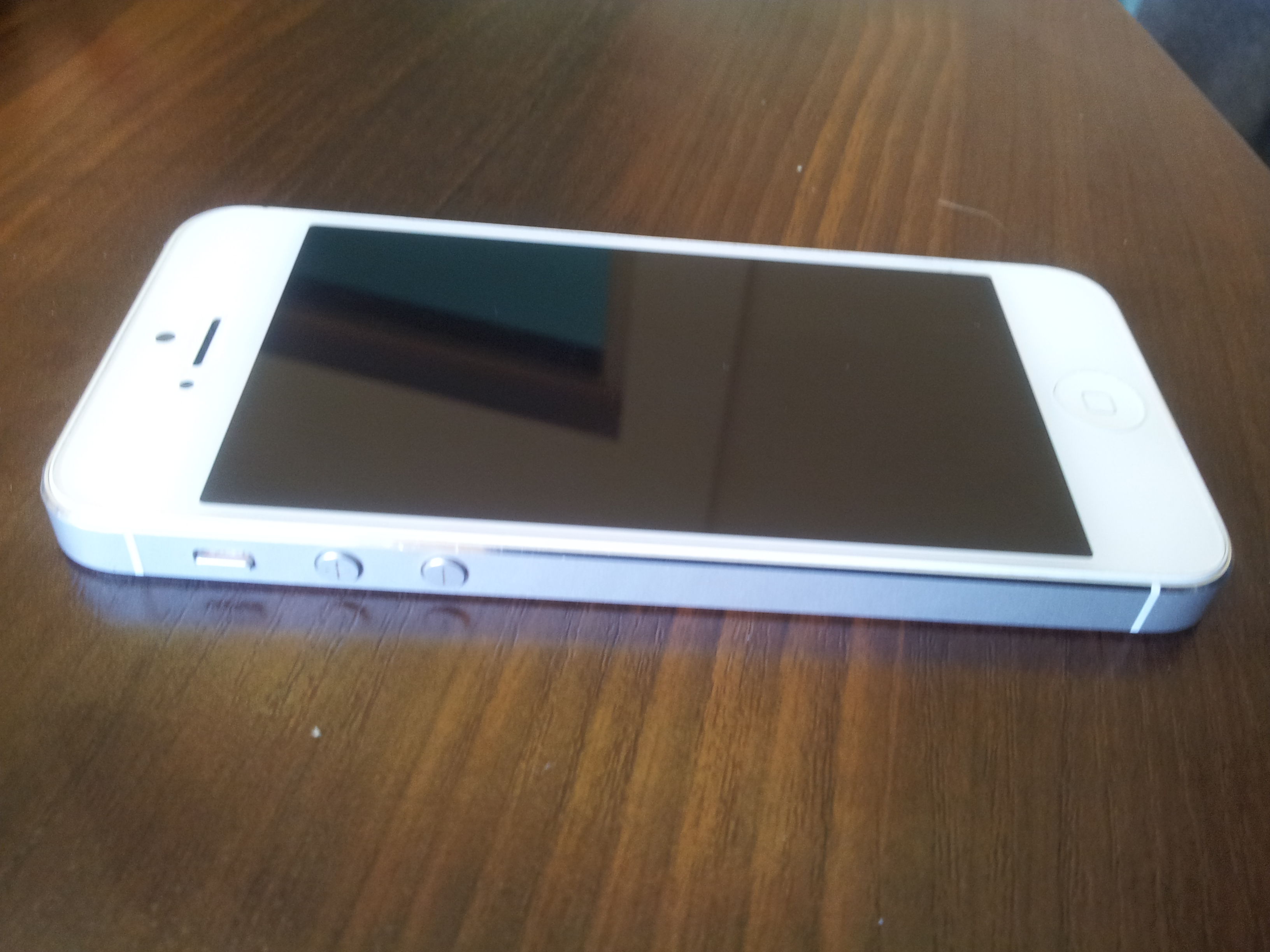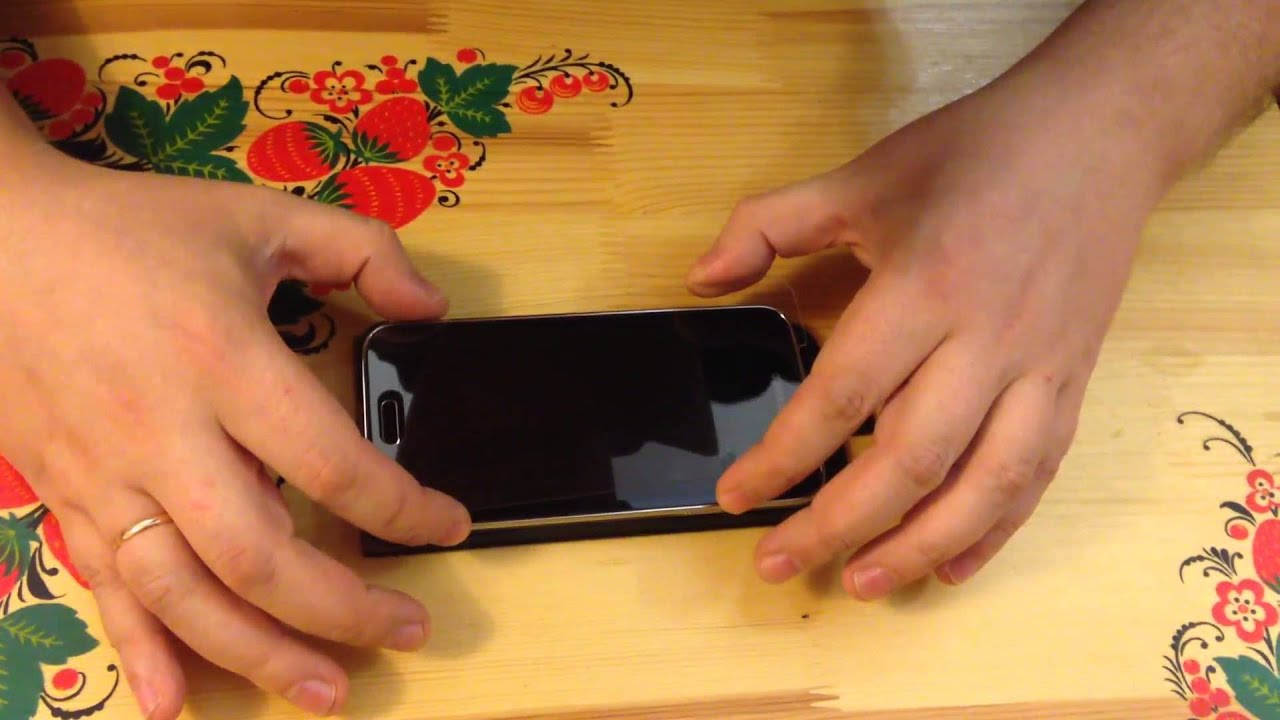How to properly glue yourself at home
It is difficult to imagine that sterile cleanliness reigns in a technician's workshop. But in order for the coating to lie flat, they clean the tablet screen and the air in the room from dust. Successful work depends on proper surface preparation.
Preparatory work
How to prepare your workplace:
- Room selection.
There should be a minimum of dust in the room. In order not to start a general cleaning with ventilation in honor of the new coating of the gadget, it is better to sit in the kitchen. In the living room or bedroom, upholstered furniture, curtains, carpets will be a source of dust. Pets also need to be occupied with food or toys in another room during work. Cat, dog hair, particles of bird feathers appear in unexpected places, but they definitely do not belong under the protective film of the tablet.
- Site preparation.
To purify the air, spray water from a spray bottle over the kitchen table. Moisture particles will settle on the table along with invisible dust. The work surface will remain to be wiped with a damp cloth.
On a clean table, you can put a tablet, packaging with a protective film and additional inventory:
- microfiber napkin;
- a plastic ruler that fits the width of the screen;
- screen cleaner - alcohol or special antistatic agent;
- cotton pads;
- scissors;
- Scotch tape - for "Plan B" if something goes wrong.

The master also needs to prepare - put on a bandage on his forehead so that hair does not fall on the screen. Long sleeves should be rolled up and hands washed.
How to glue perfectly
A special film for a specific gadget model is ready for sticking. The holes in it correspond to the location of the speakers and buttons on the device. The one-piece universal cover needs to be shaped independently according to the width and length of the screen. Millimeter markings will help you do this quickly. How to proceed:
- apply a cover to the screen of the gadget;
- put marking points with a thin felt-tip pen;
- cut with scissors.
The coating should extend beyond the limits of the screen on the sides by 2-3 millimeters, and from above should pass exactly along the line of the screen. This will help correct uneven trimming edges and make the film easier to adhere. If the whole cover is larger than the display of the gadget, it shifts, and it is inconvenient to apply markings, a home multifunctional device will help out.
The protective layer of the coating is enclosed between two protective ones. A layer labeled with sticker number 1 covers the side of the film that is applied to the display. Layer # 2 protects the outside.
The next stage of work is gluing:
- treat the surface of the screen with an antistatic agent or a cotton pad moistened with alcohol;
- permanently clean the display with a microfiber cloth;
- separate the protective layer No. 1;
- hold the film around the edges with your fingers, but touch the back side;
- overlay its edge on top, side or bottom of the screen, as convenient;
- moving from the edge and leveling with a ruler, gradually glue the coating.
Remove the top layer No. 2 from the glued film. The first protective layer may not be completely peeled off, but first peel off a small strip and continue to gradually remove it as you move along the display.

How to glue the film, or some useful tips from the editor
There are several guidelines that will help you apply the protective accessory correctly and will extend its life. Helpful advice from experts:
- it is undesirable to stick the film back to back to the edge of the screen;
- in case of unsuccessful adhesion, it is allowed to remove the protective layer and rinse under water to remove dust particles;
- it is best to apply the accessory immediately after purchasing a new device;
- to completely remove dust from the screen, you can use paper tape;
- during operation, it is recommended to wipe the film with wet wipes.
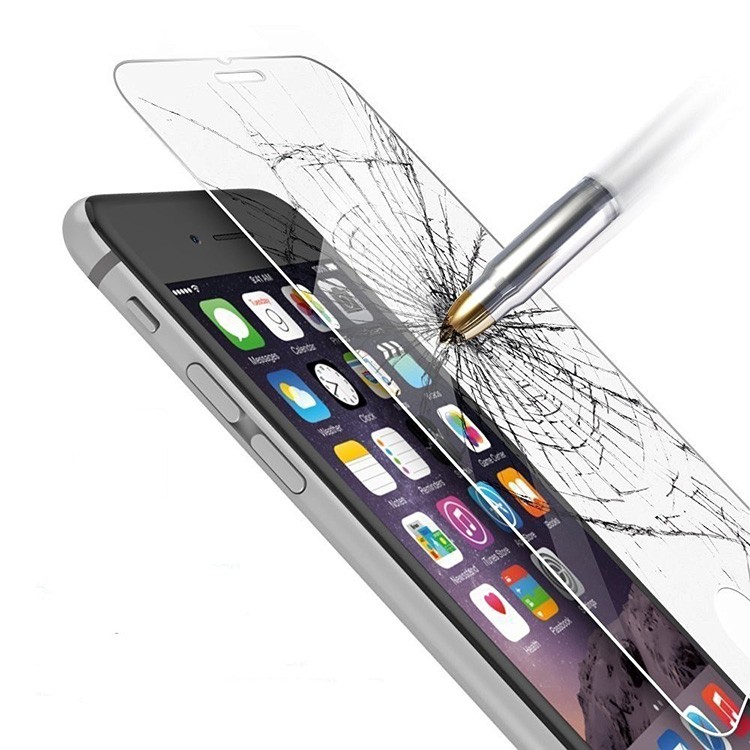 Protective glass is much stronger than film and can withstand more serious damage
Protective glass is much stronger than film and can withstand more serious damage
How to stick the protective film yourself
There are two ways to stick the film on your phone without bubbles: dry and wet.
The dry method is fast and safe, but requires skill. The wet method can pose a threat to the device in inexperienced hands.
The dry method is recommended, but it has some difficulties. Before you stick the film on your phone, you need to choose a clean and not dusty place.
And you need to prepare the tools:
- lint-free napkin;
- a plastic card;
Often, the film for the screen is already equipped with the necessary tools, so you don't have to look for anything.
How to stick the film:
- If there is an old film, remove it.
- Wipe the display with a tissue until it is perfect.
- Pull the number 1 sticker to reveal the edge.
- Place the edge of the film in the corner of the screen.
- Gently pull the 1st sticker, simultaneously pressing and smoothing the film with the card, until it is completely glued
- If bubbles appear, peel off part of the film to a bubble, and gently smooth the area with a plastic card.
- Remove the top protective layer by pulling on the number 2 sticker.
The wet gluing method is borrowed from the masters of auto glass tinting. The peculiarity of the method lies in the use of water, drops of moisture moisten and push out the dirt, protecting it from the formation of bubbles.
Before sticking the film on the phone with water, you need to realize the responsibility, since there is a risk of water getting inside. The wet method requires:
- water;
- lint-free napkin;
- plastic card.
How to stick the film yourself:
- Remove the old film from the display.
- Wipe the display with a cloth until it is shiny.
- Moisten the screen surface with liquid.
- Peel off the bottom protective layer of the film about a quarter.
- Place the edge against the wet screen, aligning it.
- Press down on the film and smooth with a card, smoothly peel off the bottom layer as you go.
- Drops of moisture protruding from the film, blot with a napkin.
- Peel off the protective layer covering the top of the film.
The main mistakes when gluing the film
In most cases, the sticker is handled by employees of the stores where the smartphone is purchased, but sometimes, after buying a new film or unwillingness to give extra money, you have to do it yourself. At the same time, it is very difficult to stick a film on the phone at home without instructions, and often inexperienced users make serious mistakes.
Mistake # 1
The most common and irreparable mistake is sticking a film on a dirty screen. The coating will deteriorate and the coating will become unusable. It is almost impossible to fix this, since there is an adhesive layer on the back of the material, which instantly collects all the dirt from the screen and spoils the glue.
Mistake # 2
It is not recommended to stick the covering in a living room, where there are many things made of fabric - there will certainly be dust in the air, which is quite difficult to remove if it gets under the film. This is one of the most common reasons for replacing the coating - dust forms bubbles that grow over time.
Mistake # 3
The adhesive layer on the film is very thin and easily washable, so it often deteriorates when many owners take it in their hands and damage the glue, thereby making the coating unusable. The film should only be held by the edges like a disc, without touching the bottom layer or using rubber gloves.
Important nuances
In work, you should adhere to the following rules:
- you need to level the coating from the center to the edges;
- level the bubbles until the protective layer No. 2 is peeled off;
- do not remove the swollen film with scissors - sharp ends will scratch the case, screen and damage the coating;
- in order for the tape to stick more tightly, you need to wipe the film with alcohol;
- instead of scissors, a clerical knife can be used to cut the universal cover;
- It is better to stick the protective layer on the wide side of the screen - this way it is less likely to move the film and stick it crookedly.
The new device has a factory-made film that protects the display from damage during transportation. The technical coating is quickly covered with scratches and peels off easily. It is easy to change it to a new one. If you need to replace the old protective film, peel it off with tape and a pointed plastic object, starting at the corner.
p> Share link:
How to stick a film on your phone quickly
If you have some experience in gluing a protective film, and you don't want to waste time strictly following the instructions, everything can be done faster. But in this case, there is a risk that not everything will work out the first time. Successful completion requires a clean, dust-free environment.
Fast bonding of the film:
- Remove the old film, wipe the screen clean.
- Take a new film, remove the bottom protective layer from it.
- Gently (without touching the sticky side with your fingers) take the film, attach it to the screen.
- Use a plastic card to smooth it out, smoothing the bubbles that appear to the edges.
- Remove the protective top layer.
Below you can see a video instruction on how to stick the bubble-free protective film as quickly as possible.
Main varieties
Protective films are universal and special for a specific gadget model. In the shop, the master has a selection of coatings. Choosing a film yourself, you need to know that the universal one will have to be cut and adjusted to the size of the screen, the location of the buttons, speakers. In addition, there are several other types of coatings that differ in protective properties.
Matte
The anti-glare coating allows you to work with the tablet outdoors, in bright indoor lighting. Thanks to the matte protection, the device will not slip out of your hands and your fingers will not leave marks on the screen. But the image becomes grainy, which is especially noticeable against a white background.
Glossy
The transparent thin coating protects the screen from scratches. Gloss does not change the color and clarity of the image, is almost invisible on the screen, protects the screen from dust and ultraviolet radiation. Transparencies are manufactured to fit the size of the displays. Minus gloss - fingerprints.
Shockproof
Thicker and denser films protect the screen from cracking when hitting, under pressure and dropped from low heights. The shockproof layer can be pasted onto the child's tablet. To protect the device, shockproof glass is also glued to the display. A thin but durable transparent plate will withstand a tablet hitting the ground with the display down. The glass retains the sensor's sensitivity, color rendition and is easier to stick on.
Confidential
Through a special filter in the protective layer, information can be seen only by looking at the screen directly. You cannot peep into the tablet from the side or at an angle. Confidential films are used to protect personal data, passwords - if necessary, enter them in public places.
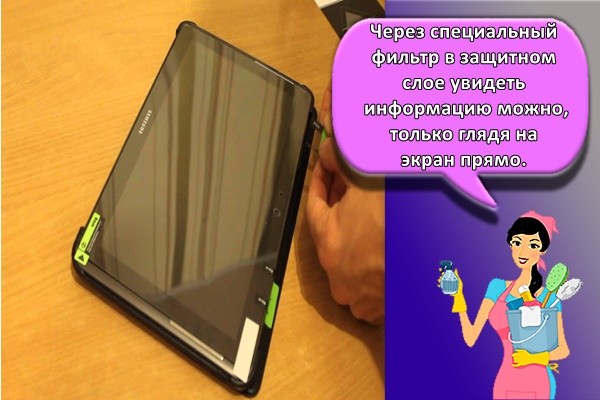
Mirrored
On an inactive screen, a reflective surface is used instead of a mirror, making the tablet even more useful for women. The mirror finish serves as a stylish design, but otherwise does not differ from the gloss. When choosing a protective film, you need to be guided by the screen size - it must correspond to the diagonal inches.
What is it for?
Smartphone displays tolerate close proximity in pockets or bags pretty well, for example, with metal objects or keys, but they can easily be scratched by small particles of dust or other hard parts found everywhere.
Essential phone accessory
A film or a protective layer on a phone screen is the only way not only to avoid minor scratches, but also acts as an additional defensive line when it falls. By taking the brunt of it, it greatly reduces the likelihood of ending up with a shattered or cracked display. Therefore, a protective film for a smartphone is an urgent need - you can glue it without much hesitation.
What you need to protect your smartphone from
What is the film for?
First of all, you need to figure out what this film is for. Over time, any screen becomes covered with a layer of dust, small scratches, wipes, fingerprints appear and the like. As a result, the phone becomes untidy, the contrast and brightness decrease, the screen sensitivity and color quality deteriorate. A protective transparent film completely covers the screen of a tablet or smartphone, while the quality of work and images does not change. Today it is the best protection against dirt and scratches, thanks to it, harmful ultraviolet light also does not pass through, the screen becomes more readable in bright sunlight, and there is no glare, but you need to know how to stick the film without bubbles on your phone.



